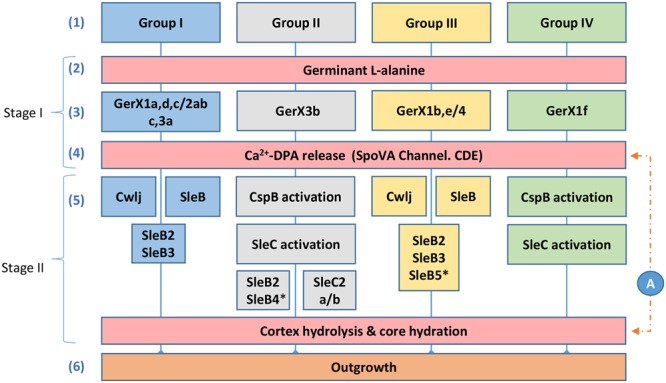FIGURE 4.

Diagrammatic model for the proposed germination pathways of C. botulinum Groups I–IV. One model for spore germination is proposed for C. botulinum Groups I and III, and a second related model is proposed for C. botulinum Groups II and IV. (1) C. botulinum Groups. Germination stage I; (2) and (3) germinant e.g., L-alanine binds to its cognate receptor located in the inner membrane (see Figure 1). (4) Ca2+-DPA is released through the SpoVA channel. Germination stage II; (5) Cortex-lytic enzymes (CLEs) are activated and then cleave the spore cortex peptidoglycan. C. botulinum Group I and Group III involves the CLEs CwlJ and SleB. C. botulinum Groups II and IV the CLE SleC is activated by CspB, followed by cortex hydrolysis. (6) Membrane and coat degradation, the recommencement of metabolism and eventually cell outgrowth of the newly formed cell. (A) The timing of the release of Ca2+-DPA is unknown in C. botulinum and may be released following germinant binding or after cortex hydrolysis. ∗only observed in a small set of Groups II and III genomes, as identified in Supplementary Table S4.
